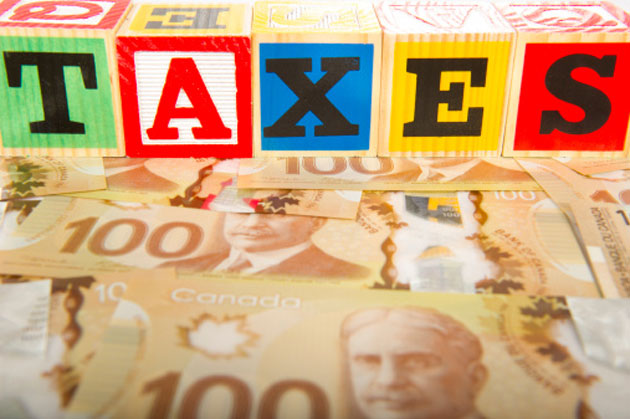Tax Tips That Will Save You Money

It’s income tax filing time again. Okay, I completely understand why you don’t want to read any further. Tax time has become a real chore. Every year, the return seems to get even more complicated. Even the pros admit to having problems figuring out sections of it. But bear with me because I may be able to save you a few bucks.
Before I get into details, let me clarify a point that seems to confuse many people. It’s essential to understand the difference between “credit” and “amount” in tax parlance. On Schedule 1 of the federal return, you’ll find more than 20 references to “amounts,” such as the age amount, public transit amount, disability amount, etc. The basic personal amount for purposes of your 2014 return is $11,138, and you enter that at line 300. Continue down the page to line 335, where you add everything together. That’s the total amount you are entitled to claim. It may look like a large number at first glance, but don’t get excited. The federal tax credit is only 15 per cent of that total. So while your total amounts might come to, say, $20,000, you can only deduct 15 per cent of that ($3,000) from the taxes you owe to Ottawa.
Now scan through the following tips and see if any apply to you.
Claim all credits Many boomers are eligible for a number of tax credits. Make sure you don’t miss any. They include the age credit for those 65 and older, which is income tested, the pension income credit of up to $2,000, the charitable donation credit and the medical expense credit. If you or your spouse suffers from any physical or mental handicap, check out the eligibility rules for the disability credit, which allows you to claim an amount of $7,766 on line 316 of the tax return. You’ll find a short questionnaire that will help determine if you qualify at www.cra-arc.gc.ca/tx/ndvdls/sgmnts/dsblts/dtc/qstns/q1-eng.html. If your spouse or common law partner has credits he/she can’t use, they can be transferred to you. These include the age amount, pension income amount, disability amount, and the tuition, education and textbook amounts.
use tax software If you prepare your own return, invest a few dollars in a tax software package. You’ll still have to enter all the numbers but you’ll eliminate one of the main reasons for delays in issuing refunds: faulty math. If you’re eligible for pension income splitting, the optimizer feature that comes with almost all programs is essential. Also, using approved tax preparation software enables you to file your return online. Your return will be processed faster and if you are due for a refund, you’ll receive it weeks sooner. There’s a tutorial about online filing at www.cra-arc.gc.ca/gncy/t1gtrdy/menu-eng.
html. But a word of warning. No software program is perfect. I have used Intuit’s TurboTax for several years but at times I still find myself caught in frustrating loops with no obvious way out. Fortunately, the company has a terrific customer service department with representatives who are actually able to take over your computer (with your permission, of course) and show you where you are going wrong.
Don’t pay if you Don’t owe The Old Age Security clawback has been the subject of a lot of controversy. Supporters claim that it’s fair to take back OAS paid to “wealthy” Canadians, while critics contend the 15 per cent surtax is usurious and a disincentive for older people to work. The 2014 income threshold for the clawback was $71,592; if your income was in excess of that some or all of your OAS will be taxed back.
However, sometimes a one-time event such as the sale of a family cottage will push someone into clawback territory. When that happens, Ottawa will make deductions from the next year’s OAS cheques, even if it is clear the person’s income will be below the threshold. If it happens to you, ask for a waiver from CRA to have Service Canada reduce your income tax withheld at source beginning in July. You’ll need to complete form T1213(OAS), Request to Reduce Tax Deductions at Source.
Always File a return Even if your income is low, there are few tax credits that are refundable. That means you get to collect them even if you don’t owe the government any money. One example is the GST/HST credit, which is available to lower-income people. Two spouses, each with an income of $17,000 in 2014 (total $34,000), are each eligible for $134 per quarter, or $536 a year. The amount of the payment drops sharply after that, but a couple with a combined income up to about $44,000 will still get something. There’s an online calculator at www.cra-arc.gc.ca/bnfts/clcltr/gstc_clcltr-eng.html.
Another refundable credit is the working income tax benefit (WITB), which is intended to provide tax relief to low-income individuals in the workforce and to encourage unemployed people to take jobs, even low-paying ones. This one can be worth a lot of money; for example, a single resident of Ontario with qualifying income of $10,000 and no other cash flow is eligible to receive a benefit of $998 for the 2014 tax year. With more people working part-time after retirement, this credit will be available to an increasing number. You’ll find an online calculator that will estimate the amount you could receive at www.cra-arc.gc.ca/bnfts/clcltr/wtb_clcltr-eng.html.
There are many more ways to cut your tax bill, but these should get
you started. For more information on tax breaks for older people, check
out the CRA page at www.cra-arc.gc.ca/seniors.
Gordon Pape is the editor and publisher of the Internet Wealth Builder and Income Investor newsletters. Go to www.buildingwealth.ca.